Are There a Number Of Hairs In Your Brush Or Comb?

When you comb your hair, are there a number of hairs in your brush or comb? If so, you can consider this as normal. Everyone loses their hair on a daily basis. It can mean the loss of 100 hairs or more each day. If, however, the loss gets more extensive, there is the possibility that you have a problem. What is the best way to find out? One thing you should definitely do is to visit your doctor so he can determine the cause. This is going to be essential to finding out what treatment can be used to stop this hair loss. There are many aspects that the doctor will consider before giving you an answer. For one, he will make sure there are no illnesses that you are suffering from that are causing the loss of hair. Once you start researching, you will find that there are many causes that could be contributing to your hair loss. Stress is one aspect that can cause excessive hair loss. A serious trauma can cause this problem as well. A pregnancy can cause hair loss. Something as simple as ringworm is another reason for losing hair. Thyroid problems are another. Crash diets can cause you to lose significant amounts of hair. Menopause can cause hair loss for women. So, as you can see, there are many reasons that excessive hair can be lost. That is why it is so important to find out the exact cause before trying to treat this problem. We suggest that you get a consultation with one of our GLOJAS Doctors who are experts in their field to identify the right treatment your body needs to achieve your goal. GLOJAS Hair Specialist Clinic provides the best solution-oriented hair transplant with our specialist doctors experts in their fields, treating all of our patients with honest, trustworthy, ethical, and equal service of the highest quality, meeting all the required national and international standards.
Benefits of SMART PRP for Hair Loss
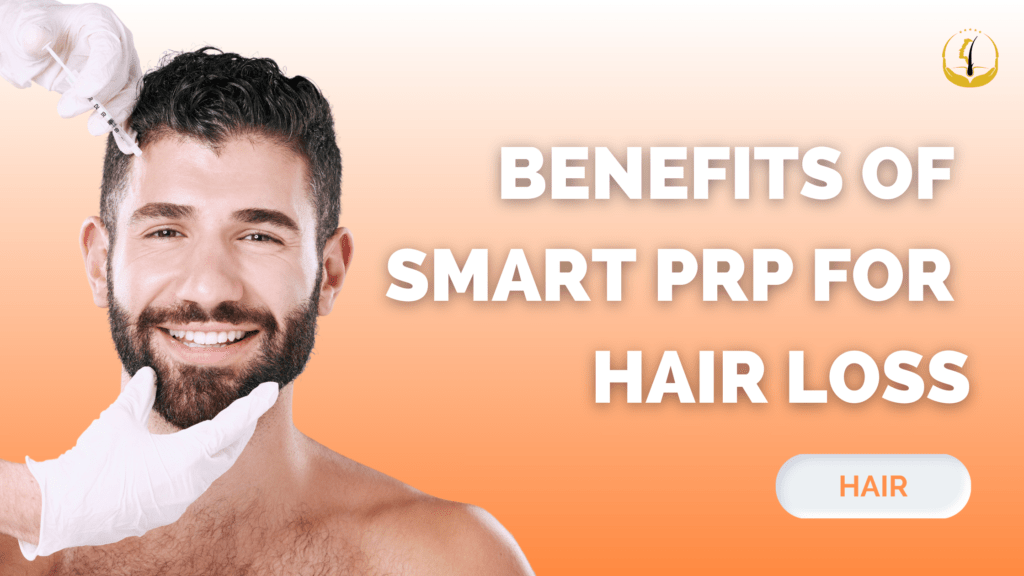
Hair loss is a prevalent concern impacting millions worldwide, often causing a dent in confidence and self-esteem. As an innovative solution, SMART™ Platelet-Rich Plasma (PRP) has emerged, promising a natural and effective alternative to more invasive treatments. In this exploration, we delve into the science behind SMART™ PRP and its potential as a game-changer in the battle against hair thinning. SMART™ Platelet-Rich Plasma (SMART™ PRP) SMART™ Platelet-Rich Plasma, exclusive to GLOJAS, is a cutting-edge treatment utilizing the body’s natural healing mechanisms to promote hair growth. The procedure involves drawing a small blood sample, centrifuging it to extract platelet-rich plasma, and injecting the concentrated SMART™ PRP into the scalp. Rich in growth factors and proteins, platelets play a pivotal role in tissue repair and regeneration. The Science Behind SMART™ Platelet-Rich Plasma for Hair Loss PRP therapy capitalizes on platelets’ ability to stimulate hair follicles, extend the hair growth phase, and induce new hair follicle formation. Growth factors in PRP promote angiogenesis, fostering the formation of new blood vessels around hair follicles, delivering essential nutrients and oxygen. Additionally, SMART™ PRP aids in reducing inflammation, a known contributor to hair loss. Advantages of SMART™ Platelet-Rich Plasma for Hair Loss SMART™ PRP therapy presents a non-invasive and promising solution for addressing hair loss. By leveraging the regenerative properties of platelets from a patient’s own blood, SMART™ PRP stimulates hair follicles, encourages cellular rejuvenation, and enhances blood circulation to the scalp. Administered through micro-injections, SMART™ PRP releases growth factors initiating natural hair growth, slowing down hair loss progression. This innovative treatment is a safe, minimally discomforting option for countering hair thinning, pattern baldness, and utilizing the body’s innate healing mechanisms for hair restoration. Incorporating SMART™ Platelet-Rich Plasma into Your Hair Loss Regimen For those considering SMART™ PRP therapy, consulting with GLOJAS experts is crucial. A personalized treatment plan, considering individual conditions and needs, typically involves sessions spaced several weeks apart to achieve optimal results. SMART™ Platelet-Rich Plasma therapy signifies a groundbreaking advancement in hair restoration. By tapping into the body’s natural healing mechanisms, it offers a safe and effective solution for individuals grappling with hair loss. As scientific exploration continues, SMART™ PRP therapy holds promise not only for hair restoration but also for rejuvenating self-confidence in those experiencing thinning hair. If you seek a natural and minimally invasive approach to hair restoration, SMART™ PRP therapy could be the transformative solution you’ve been searching for. Connect with GLOJAS today for a comprehensive consultation.
Can Hair Growth Oil Reverse Hair Loss?

The quest for healthy, thick hair has led many individuals down a winding path of hair care products and remedies. Among the most touted solutions is hair growth oil, often marketed as a miraculous elixir that can reverse hair loss and promote regrowth. But does this seemingly magical oil really live up to its claims? Without any further delay, let’s explore the science behind hair loss, the potential benefits of hair growth oils, and whether they can genuinely reverse hair loss. What is Hair Loss? Before we get deeper into the efficacy of hair growth oils, it’s crucial to understand the root causes of hair loss. Hair loss, medically known as alopecia, can be attributed to a variety of factors, including genetics, hormonal imbalances, medical conditions, certain medications, and lifestyle choices. The most common form of hair loss is androgenetic alopecia, often referred to as male or female pattern baldness, which is influenced by genetic and hormonal factors. The Role of Hair Growth Oils in Hair Loss Hair growth oils typically contain a blend of natural and essential oils that are believed to nourish the scalp, strengthen hair follicles, and stimulate hair growth. These oils often include ingredients like coconut oil, castor oil, jojoba oil, and argan oil, each with its own purported benefits for hair health. Proponents of hair growth oils argue that these natural ingredients can help increase blood circulation to the scalp, deliver essential nutrients to hair follicles, and reduce inflammation, all of which are thought to contribute to healthier hair and potential regrowth. Natural vs. Pharmaceutical Approaches of Hair Growth Oils in Hair Loss While natural ingredients found in hair growth oils may offer some benefits, it’s important to note that the concentrations and mechanisms of action may differ from pharmaceutical solutions. Minoxidil, for instance, has undergone rigorous testing and clinical trials to substantiate its effectiveness, while the evidence for hair growth oils remains largely anecdotal. While hair growth oils may offer some benefits for hair health, it’s crucial to approach the claims with skepticism. The scientific evidence supporting the idea that hair growth oils can reverse hair loss is currently lacking. Hair loss is a complex issue influenced by various factors, and no single product or remedy can guarantee a complete reversal of this process. Maintaining a healthy lifestyle, including a balanced diet, proper hair care practices, and, if necessary, medical treatments prescribed by healthcare professionals, remains the most effective approach to addressing hair loss. There’s no denying that hair growth oils have captured the attention of many seeking a remedy for their thinning locks. While these oils may offer certain benefits for hair health. As we continue to unravel the complexities of hair growth and loss, it’s essential to approach such remedies with realistic expectations and consult with GLOJAS professionals for comprehensive and evidence-based solutions. Click the link to learn more about breast implant: “Can You Inherit the Hair Loss Condition?” At Glojas, we welcome clients to reach out to us directly to schedule a free initial consultation. We offer guidance and valuable insights on how best to address your specific challenges. Let us assist you in navigating your journey with confidence and clarity.
How Much Should I Pay For A Hair Transplant?
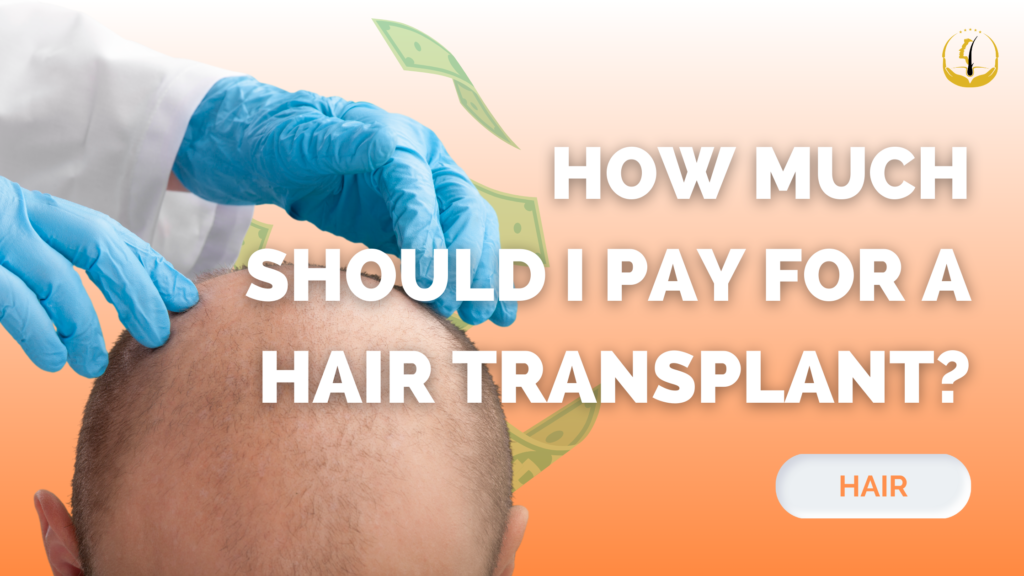
This is an important question that comes to the mind of most hair loss patients. Thinking about cost is not wrong since it is quite natural if one desires to make an affordable deal. However, things are different when you are looking for a hair specialist. While you get the treatment for any health issue, it means you need perfect results and you have to pay for the same. Obviously, it is not like buying your new car or dress. This is the matter of your health and if we talk about hair transplant, your look is also involved in the decision-making process. Conclusively, you have to consider the quality and safety before cost to make a good decision. Are cheap clinics disadvantageous? This is not a rule. Maybe you find a cheap and effective clinic but your aim should be quality treatment but not cheap treatment. While a clinic makes a claim to provide a cheap cost, you have to ask about other facilities they provide. Moreover, an extremely cheap cost is suspicious. Can you get gold at the price of bronze? Of course not! Thus, affordability is OK but you cannot rely on impractical claims. While you try to find out a clinic for hair loss treatment, you need to consider the following cost factors as well. The bald area on the scalp. A larger area on the scalp clearly indicates that you will get your treatment at a higher cost. Similarly, only a restoring hairline will be comparatively cheaper for the patient. You have to pay for every graft and every graft will increase the total cost after the treatment. Therefore, the surgeon has to count the grafts to determine the full cost. A more experienced and qualified surgeon will ask for more bucks after the treatment. If you reside in a metro city, the clinics in your city will be costlier for you. Clinics in a small city are comparatively cheaper. Your medicated shampoo, lotion, antibiotics, and other medicines might increase your bill after the treatment. Sub-procedures. Sometimes, the surgeon performs treatments like PRP to increase the effectiveness of the hair transplant surgery. Surely, PRP will increase the total cost. As you see, hair loss clinics have to consider several factors to determine the final cost. Different affordable clinics provide different offers to cut the total cost including low-interest rates, installments, seasonal offers, reduced fees for the initial consultation, free consultation on a specific day in a week, etc. If you want a reasonable cost for a hair transplant the GLOJAS Hair Specialist Clinic can fulfill your objectives. GLOJAS Hair Specialist clinic has developed a team of doctors and experts who have full mastery of hair transplants and other cosmetic procedures.
The Impact of a Weak Donor Area in Hair Transplants
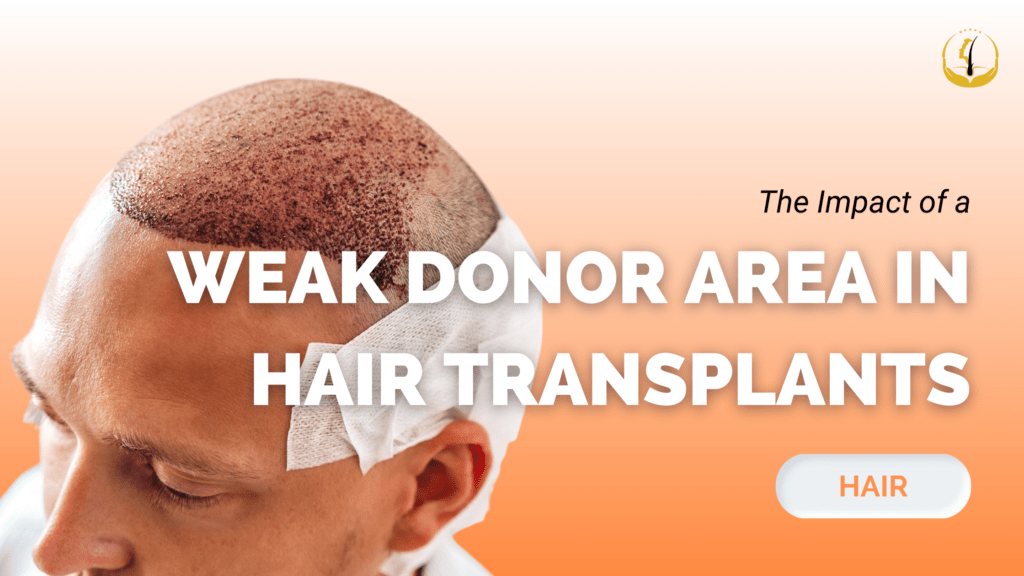
When considering a hair transplant, one of the most important factors is the donor area—the section of your scalp that provides the healthy hair follicles needed for the transplant. However, not all donor areas are created equal. A weak donor area can present challenges during the hair restoration process. In this blog, we will explore the effects of a weak donor area on hair transplants, why it happens, and what options you have to address it. What is a Weak Donor Area? A weak donor area refers to the region of your scalp, usually at the back and sides of your head, that lacks sufficient healthy hair follicles to support a successful hair transplant. This can be due to factors like thinning hair, scar tissue, or medical conditions that affect hair growth. The donor area is essential in hair transplants because it provides the follicular units (groups of hair follicles) that are transplanted to other areas of the scalp. A weak donor area means fewer follicles can be harvested, potentially compromising the outcome of the procedure. Why Does a Donor Area Become Weak? Several factors can contribute to a weak donor area: Genetics: Some people naturally have thinner hair in the donor area, making it more difficult to extract enough healthy follicles for the transplant. Age: As we age, the hair in the donor area may naturally thin out, reducing the number of usable follicles for the transplant. Previous Hair Transplants: If you’ve had a hair transplant in the past, the donor area may already be compromised due to scarring or depletion of hair follicles. Medical Conditions: Certain conditions, like alopecia areata or scalp infections, can weaken the donor area by reducing the quality or quantity of hair follicles. How Does a Weak Donor Area Affect Hair Transplants? A weak donor area can create multiple challenges during a hair transplant procedure. Here are some of the impacts: 1. Limited Number of Follicles The most obvious effect of a weak donor area is that fewer healthy hair follicles can be harvested. This limits the number of follicles available for transplantation, which may result in suboptimal coverage in the recipient area. The surgeon may have to work with fewer follicles, which can affect the final appearance of your hairline or overall hair density. 2. Poor Hairline Design Creating a natural-looking hairline is a key goal of hair transplants. With a weak donor area, there may not be enough follicles to create a full, natural-looking hairline. This could result in a thinner hairline or an unnatural appearance that doesn’t blend well with the surrounding hair. 3. Risk of Over-Harvesting If too many follicles are extracted from a weak donor area, it can lead to over-harvesting, which damages the scalp and may result in noticeable thinning or scarring. This is especially a concern with methods like FUT (Follicular Unit Transplantation), which involves removing a strip of skin from the donor area. 4. Slower Healing Process A weak donor area may take longer to heal after the procedure. The lack of hair follicles or the presence of scar tissue can make the healing process slower, leading to a higher risk of complications like infection or excessive scarring. 5. Compromised Results Ultimately, a weak donor area can affect the success of the hair transplant. If the donor area doesn’t provide enough healthy follicles, the results may not meet expectations. The transplant might not yield the full, thick hair coverage you were hoping for, and the area may appear patchy or uneven. What Are the Treatment Options for a Weak Donor Area? Although a weak donor area can complicate hair transplant procedures, there are several treatment options and strategies available to improve outcomes: 1. Platelet-Rich Plasma (PRP) Therapy PRP therapy is a non-surgical procedure that involves injecting your own platelet-rich plasma into the scalp to stimulate hair growth. This treatment can help improve the quality and density of the donor area by encouraging the growth of healthier hair follicles. PRP therapy is often used in combination with hair transplants to optimize results. 2. Hair Cloning and Stem Cell Treatments While still in development, hair cloning and stem cell therapy are exciting advancements in hair restoration. These techniques involve growing new hair follicles from your own cells in a laboratory setting, which are then transplanted into the scalp. If you have a weak donor area, these treatments could offer a solution by providing additional follicles for transplantation. 3. Scalp Micropigmentation (SMP) For those with a weak donor area who are not candidates for further transplants, scalp micropigmentation may offer a cosmetic solution. This procedure involves tattooing tiny dots on the scalp to simulate the appearance of hair follicles. While it doesn’t restore hair, SMP can help create the appearance of fuller hair and camouflage thinning areas. 4. Non-Surgical Hair Restoration There are several non-surgical options for managing hair loss, such as minoxidil (a topical solution) and hair fibers that can be applied to the scalp to create the appearance of fuller hair. These treatments won’t restore hair, but they can help camouflage the weak donor area and improve overall aesthetics. 5 Frequently Asked Questions (FAQs) About Weak Donor Areas in Hair Transplants 1. Can a weak donor area still be used for a hair transplant?Yes, but the results may be limited. A weak donor area can reduce the number of follicles available for extraction, which may affect the transplant’s final outcome. Alternative treatments like PRP therapy may help improve the donor area’s health. 2. How can I improve my weak donor area before a transplant?Treatments like PRP therapy can stimulate hair growth in the donor area, potentially increasing the number of usable follicles. It’s best to consult with a specialist to determine the most effective treatment for your situation. 3. Can a weak donor area cause poor results?Yes, a weak donor area can lead to less coverage, a thinner hairline, or an unnatural appearance. It’s important to discuss your options with a surgeon to set realistic expectations
The Role of Age in Hair Transplants
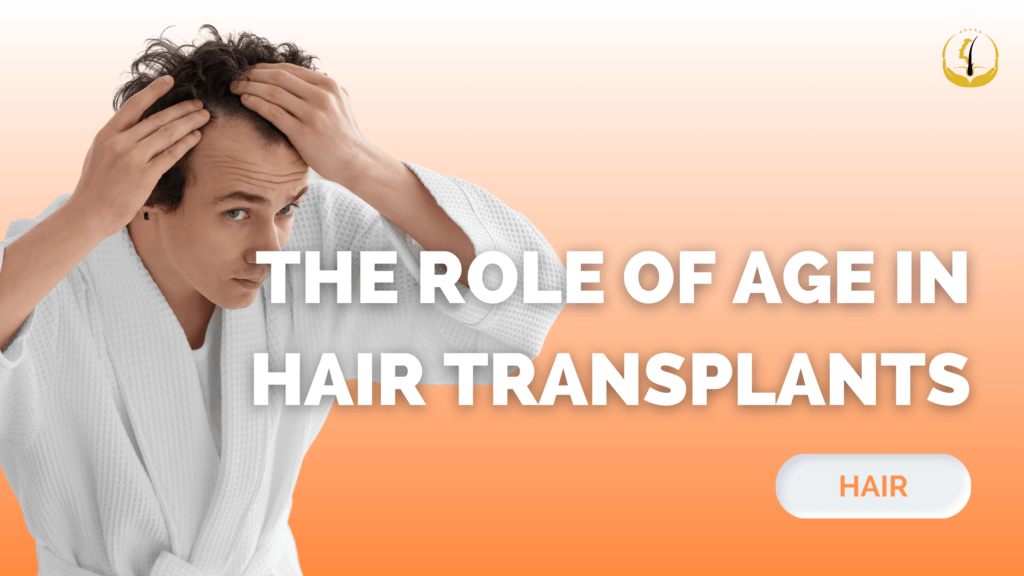
Hair loss is a common concern that affects individuals of various ages, and seeking solutions like hair transplants has become increasingly popular. However, the question of whether age matters when considering a hair transplant often arises. In today’s post, we will explore the significance of age in the context of hair transplants and provide insights into the factors that should be taken into consideration. Before delving into the role of age in hair transplants, it is essential to understand the different patterns of hair loss. Hair loss can occur due to various factors such as genetics, hormonal changes, medical conditions, and lifestyle choices. The most common type of hair loss, known as androgenetic alopecia or male/female pattern baldness, follows a progressive pattern and can start as early as the late teens or early twenties. Age and Hair Transplants While age is an important factor, it is not the sole determinant in deciding whether a person is a suitable candidate for a hair transplant. What matters more is the stage of hair loss and the stability of the hair loss pattern. In some cases, younger individuals experiencing early stages of hair loss may not be ideal candidates for a hair transplant as their hair loss pattern might not have stabilized yet. Hair transplant surgeons often recommend waiting until the pattern has stabilized before proceeding with the procedure to achieve more effective and lasting results. Candidates for Hair Transplant Procedure Hair transplant surgeons evaluate potential candidates based on various factors beyond age, such as the extent of hair loss, donor hair availability, overall health, and realistic expectations. A thorough assessment helps determine whether the individual is a good candidate for the procedure and which technique – such as SMART™ Follicular Unit Excision (SMART™ FUE) or SMART™ Follicular Unit Transplantation (SMART™ FUT), available only at GLOJAS – would be most suitable. Best Age for Hair Transplant Procedure While there isn’t a strict age limit for hair transplants, the general consensus is that individuals in their late 20s to early 60s are often considered ideal candidates. This is because hair loss patterns tend to stabilize within this age range, increasing the likelihood of successful and natural-looking results. However, every individual is unique, and exceptions can occur based on the specific circumstances. In the realm of hair transplants, age is an important factor, but it is not the sole determinant of candidacy. The stage of hair loss and the stability of the hair loss pattern play a crucial role in deciding whether an individual is suitable for the procedure. While individuals in their late 20s to early 60s are often considered optimal candidates, the final decision should be based on a comprehensive assessment by a qualified hair transplant surgeon. It’s essential to consult GLOJAS experts, specializing in hair restoration to determine the most appropriate course of action based on individual needs and circumstances. With advances in medical technology and surgical techniques, hair transplants can provide successful outcomes for a wide range of individuals, regardless of their age. At Glojas, we welcome clients to reach out to us directly to schedule a free initial consultation. We offer guidance and valuable insights on how best to address your specific challenges. Let us assist you in navigating your journey with confidence and clarity.
Can Smoking & Alcohol Hinder Hair Transplant Growth?
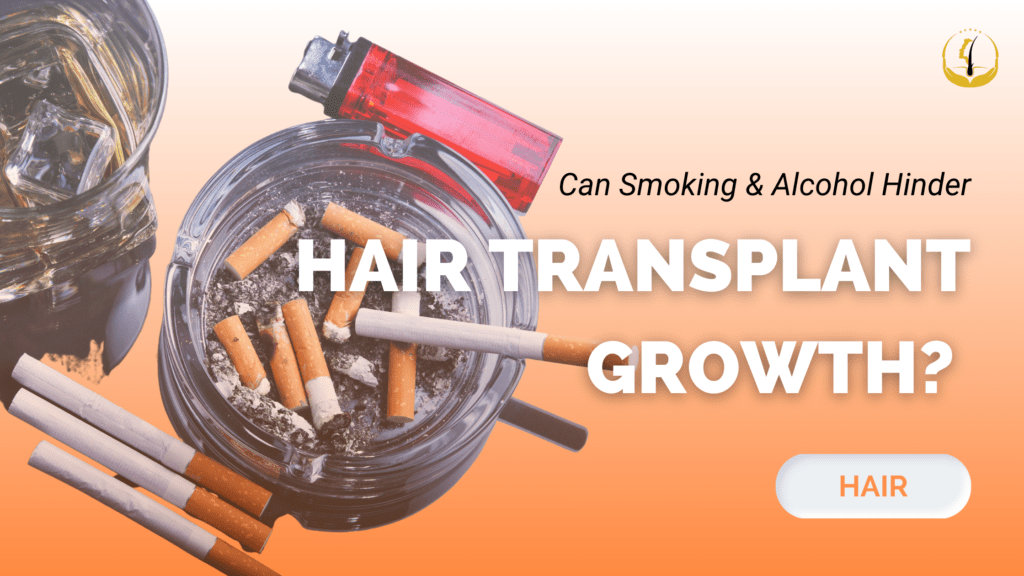
Smoking or alcohol consumption can have adverse effects on the outcomes of hair transplant. Before and after the surgery, you’re expected to stay away from both of these harmful habits. The surgeon at GLOJAS will ask you questions related to smoking, alcohol consumption or medicines that you take before the surgery. Hair restoration treatment is performed to remove baldness problems. It’s a minimal invasive surgical procedure that is performed in multiple sessions and outpatient basis. There are some precautions and steps recommended by the surgeon that you need to follow before and after the treatment. The surgeon will also ask you minor, but important details about your lifestyle. Some important questions about your lifestyle that will be asked by the surgeon Do you smoke? Do you Consume alcohol? What medicines do you take? Do you utilize any type of herbal food item? These questions are generally asked not only before hair restoration surgery, but in fact before any kind of surgery. Many people wonder what the relation between smoking, drinking and surgery is. Or, why do they need to disclose the medications, herbal products or vitamin supplements they take in front of the transplant surgeon? The major connection between these lifestyle habits of a person and surgery is that these might cause excessive bleeding before and after the operation. This is the main reason why doctor will ask some thorough questions like Do you smoke if yes, then how much and since when? Do you drink alcohol if yes, then how many times in a day and since when? Do you use any banned recreational drugs if yes, then how many times in a day and since when? Are there any prescribed medicines that you take? Do you take any non-prescribed medicines or painkillers? Do you take any vitamin supplements? Do you consume any herbal products? While these questions are asked, the patient needs to be honest and straightforward in their answers, regardless of how embarrassed he/she feels. Patients who realize that smoking and alcohol consumption are usually viewed as unhealthy habits might be unwilling to admit to the surgeon that they’ve these bad habits, or to admit the amount or rate they drink or smoke. In a pre-surgery examination, the surgeon needs true answers for all of these questions. The intention of the surgeon is not to ask to change the habits of the patient, but to ensure that these habits don’t interfere in the Hair Transplant surgery results and don’t cause excessive bleeding before or after the treatment session. Patients must be genuinely honest while speaking to the top hair transplant surgeon at GLOJAS. They must tell their surgeons all the prescribed or over-the-counter medications he/she has been taking. The patient should also give details about herbal products, or vitamin supplements they have been consuming. In some cases, it’s possible that the patients might not remember the name of the medicines they have been consuming, so the surgeon may ask patients to show the medicines or ask them to get the name of the medicine. Consult for FREE at GLOJAS Hair Specialist Clinic. We provide the best solution-oriented hair transplant with our specialist doctors experts in their fields, treating all of our patients with honest, trustworthy, ethical, and equal service of the highest quality, meeting all the required national and international standards.
How Does Cleft Lip Hair Transplant Procedure Work?

Hair loss can be a distressing experience for anyone, impacting not only our physical appearance but also our self-esteem. While we often associate hair loss with the scalp, it’s important to recognize that hair loss can affect other parts of the body, including the face. One such condition is cleft lip, which can lead to a noticeable absence of hair in the affected area. In this blog, we will be exploring how cleft lip hair transplant clinic can provide a solution for this unique hair loss issue. Cleft Lip and Its Impact on Hair Loss A cleft lip is a congenital condition that occurs during fetal development, resulting in a split or gap in the upper lip. While the primary concern for individuals with a cleft lip is often related to the appearance of the lip itself, it’s not uncommon for this condition to affect the surrounding facial hair as well. Hair follicles in the affected area may be sparse or even absent, leading to a noticeable gap in facial hair growth. FUE Hair Transplant: The Hair Loss Solution FUE hair transplant is a minimally invasive surgical procedure that has gained popularity as an effective hair loss solution. Unlike traditional hair transplant methods, FUE does not involve a linear incision or sutures, making it an ideal choice for addressing hair loss in sensitive areas like the cleft lip. Here’s how cleft lip hair transplant with FUE works: Consultation and Assessment: The journey begins with a consultation with a qualified hair transplant surgeon who specializes in facial hair restoration. During this consultation, the surgeon will assess the extent of hair loss and discuss your goals and expectations. Donor Hair Extraction: In FUE, hair follicles are extracted individually from a donor area, typically the back or sides of the scalp. The surgeon uses a small, specialized tool to remove each follicle, leaving tiny, nearly invisible puncture marks. Graft Preparation: The extracted hair follicles are then carefully prepared for transplantation. Each graft is trimmed and sorted to ensure they are viable for transplantation. Anesthesia: Local anesthesia is administered to both the donor and recipient areas to ensure that the procedure is painless and comfortable for the patient. Graft Implantation: The surgeon makes tiny, precise incisions in the cleft lip area where hair is needed. The prepared grafts are then meticulously implanted into these incisions. Recovery and Healing: After the procedure, patients can expect some redness and minor swelling in both the donor and recipient areas. However, these side effects typically subside within a few days, and patients can resume their normal activities. Results: Over the next several months, the transplanted hair follicles will begin to grow naturally. With proper care and follow-up appointments with the surgeon, patients can expect long-lasting, natural-looking results. Benefits of Cleft Lip Hair Transplant with FUE Natural Appearance: FUE hair transplant delivers natural-looking results, ensuring that the transplanted hair seamlessly blends with the surrounding facial hair. Minimally Invasive: The absence of a linear incision means minimal scarring, making FUE an excellent choice for facial hair restoration. Precision: FUE allows for precise placement of individual hair follicles, ensuring that the transplanted hair matches the patient’s desired aesthetic. Quick Recovery: Patients can typically return to their regular activities within a few days, making FUE a convenient option for busy individuals. Hair Loss Tips for Cleft Lip Patients In addition to considering a cleft lip hair transplant, individuals with this condition can take steps to manage and maintain their facial hair: Healthy Lifestyle: A balanced diet and proper hydration can support overall hair health. Gentle Care: Be gentle when grooming facial hair to avoid any unnecessary stress on the hair follicles. Consultation: Regular consultations with a hair transplant specialist can help monitor hair growth and address any concerns. Hair loss, whether on the scalp or in unique areas like the cleft lip, can have a significant impact on one’s self-esteem and overall well-being. Fortunately, FUE hair transplant offers a viable solution for individuals dealing with hair loss in the cleft lip area. If you’re considering a cleft lip hair transplant as your hair loss solution, remember to consult with GLOJAS experts who specializes in facial hair restoration. With the right expertise and approach, you can achieve the results you desire and enhance your self-confidence. At Glojas, we welcome clients to reach out to us directly to schedule a free initial consultation. We offer guidance and valuable insights on how best to address your specific challenges. Let us assist you in navigating your journey with confidence and clarity.
How Hair Transplant Can Improve the Appearance of Cleft Lip Scars
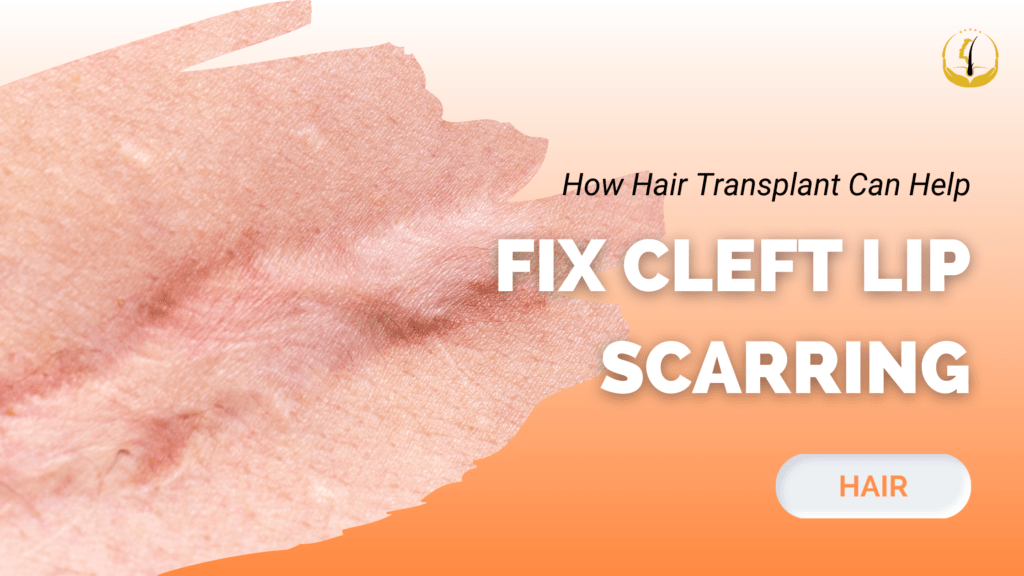
Cleft lip and palate are congenital conditions that affect millions of individuals worldwide. While medical advancements have made it possible to correct these conditions through surgery, cleft lip patients often face the ongoing challenge of visible scarring. Fortunately, there’s a promising solution that can help improve the appearance of cleft lip scars – hair transplant. Let’s explore how hair transplant, particularly FUE (Follicular Unit Excision) hair transplant, can offer a transformative solution for those looking to address cleft lip scarring while enhancing their overall appearance. We’ll also provide valuable insights into hair loss and hair transplant as a potential solution. What is a Cleft Lip Scarring? Cleft lip is a congenital condition that occurs when there is a gap or split in the upper lip during fetal development. Surgical intervention is typically performed during infancy to correct the condition, but scarring remains an inevitable consequence. These scars can vary in size and severity, often affecting the appearance and self-esteem of those living with them. While some individuals embrace their scars as a part of their unique identity, others may seek ways to reduce their visibility. FUE Hair Transplant in Cleft Lip Scar Improvement Hair transplant, particularly the FUE technique, has gained popularity as a versatile solution for addressing various types of scars, including those resulting from cleft lip surgery. FUE hair transplant involves extracting individual hair follicles from a donor area, typically the back or sides of the head, and implanting them into the scarred area. Here’s how this procedure can help improve cleft lip scarring: Scar Concealment: Hair transplant provides a natural and effective way to conceal cleft lip scars. The transplanted hair follicles create a dense and aesthetically pleasing appearance, camouflaging the scar and making it less noticeable. Scar Softening: The transplanted hair can help soften the appearance of the scar by blending it with the surrounding skin and making it less rigid and conspicuous. Enhanced Facial Symmetry: For some cleft lip patients, scarring may lead to facial asymmetry. Hair transplant can help restore balance to the face by framing the lips and drawing attention away from the scar. Hair Loss and Cleft Lip Scarring While addressing cleft lip scars is a primary concern, many individuals with this condition also experience hair loss or thinning hair due to genetics or other factors. This presents an opportunity for a comprehensive solution that not only improves scarring but also addresses hair loss concerns. Here’s how hair transplant can serve as a dual-purpose solution: Simultaneous Treatment: FUE hair transplant allows for simultaneous treatment of both cleft lip scarring and hair loss. By strategically transplanting hair follicles, the procedure can enhance facial aesthetics while addressing hair loss concerns in one session. Boost in Confidence: Individuals who have undergone cleft lip surgery and experience hair loss may face compounded self-esteem issues. A successful hair transplant can provide a significant boost in confidence by improving both their facial appearance and hair density. Hair Loss Tips and Solutions For individuals considering hair transplant as a solution for cleft lip scarring or other hair loss concerns, it’s essential to understand the process and take steps to ensure its success. Here are some tips and insights: Consultation: Schedule a consultation with a qualified hair transplant surgeon to assess your specific needs and candidacy for the procedure. Pre-Procedure Preparation: Follow your surgeon’s recommendations for pre-procedure preparation, which may include refraining from certain medications or habits that could affect the outcome. Post-Procedure Care: Proper aftercare is crucial for the success of your hair transplant. Follow your surgeon’s instructions diligently to ensure optimal results. Realistic Expectations: Understand that hair transplant is not a one-size-fits-all solution. Discuss your expectations with your surgeon to ensure they align with what the procedure can realistically achieve. Hair transplant, particularly FUE hair transplant, offers a promising solution for individuals seeking to improve the appearance of cleft lip scarring while addressing hair loss concerns. By concealing scars, softening their appearance, and enhancing facial symmetry, this procedure can provide a transformative experience for those looking to boost their confidence and embrace a more positive self-image. If you’re considering hair transplant as a solution, consult with GLOJAS hair experts to explore your options and take the first step towards a life-changing transformation. Click the link to learn more about Cleft Lip Hair Transplants: “How Does Cleft Lip Hair Transplant Work?” At Glojas, we welcome clients to reach out to us directly to schedule a free initial consultation. We offer guidance and valuable insights on how best to address your specific challenges. Let us assist you in navigating your journey with confidence and clarity.
Exploring Advanced Techniques: Are Scarless Hair Transplants Possible?

Many people wonder if there’s truly a scarless hair restoration available. No need to worry anymore as there’s a hair transplant known as FUE (Follicular Unit Extraction) at GLOJAS, which certainly makes it possible. Let’s take a look to know more about this amazing advanced hair restoration treatment. Baldness is a major problem that affects many men/women around the globe. Hair transplant surgery is an excellent way to solve the problem of hair loss. However, many people are afraid of the scars that come along with these procedures. It’s time to discover the scarless hair transplant procedures available. How Scarless Hair Transplants Are Achieved? Follicular unit procedures, the most mainstream type of hair rebuilding, is performed in 2 distinctive ways: Strip Harvesting or Unit Extraction. In conventional strip harvesting, specialists extract a long piece of the kin from the back of the scalp, which is then called the donor area. After that the remaining skin is sutured together and hair is expelled from the strip and set in the areas where the hairline is receding like, around the crown or at the top of the head. The issue here is that the sutures by and large leave a scar at the back of the scalp, which is particularly visible if a man has a small hairstyle. On the other hand, unit extraction is a procedure in which a tiny circular punch is made to extract follicular units with each comprising 3 to 4 hairs. These hairs are then transplanted at the area where hairs are receding. There are tiny holes left on the back of the scalp, which heals after some time leaving small white dots that are really undetectable. So, we can say that it’s really a scarless hair restoration surgery. Is The Hair Transplant Really Scarless? The reality of the situation is that there is no scarless hair restoration procedure. It’s all about different types of scars and how less visible they are to other people. The scar from the strip method is significantly more visible, which makes it less popular among individuals who are looking for a transplant. FUE has some scarring, yet the dots are basically invisible after the recovery period is over. This is the main reason that experts claim that it’s almost a scarless treatment. However, in recent developments, there have been changes in the strip method that have made its scarring less visible. Is Hair Transplant Right for You? FUE is a standout among the most developed and trusted methods of transplant surgery. However, only an expert surgeon like at GLOJAS can determine if it’s right for you or not. There’s no doubt that FUE hair transplant has a reputation of being the only scarless treatment, but the recent advancements in the strip extraction technique has increased its popularity as well. Hair transplant is no doubt the best solution if you’re experiencing a constantly receding hairline. It depends on you to choose the type of restoration procedure, but it’s crucial to consider all the facts and consult your surgeon before reaching any decision. Consult for FREE at GLOJAS Hair Specialist Clinic.